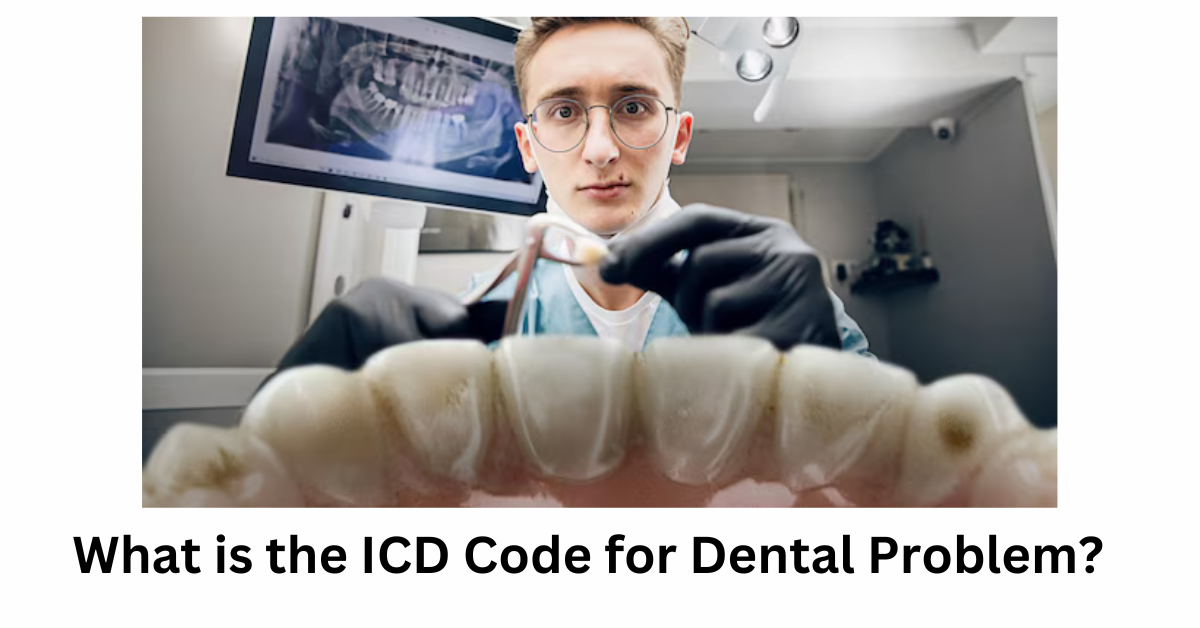What is the ICD Code for Dental Problem?
Understanding the International Classification of Diseases (ICD) for dental problems is important for healthcare companies, dentists, and patients examining coverage or treatment documentation. Established by the World Health Organization (WHO), and these codes provide a standardized way of classifying diseases, accidents, and health conditions internationally.
In this booklet, we are able to explore what ICD codes are, their importance in dentistry, and the basic rules for dental issues.
What Are ICD Codes?
The ICD arrangement is a globally accustomed arrangement for disseminating ache and bloom information. In its accepted form, ICD-10 contains more than 70,000 codes for an advanced array of medical conditions. Each cipher is an aggregate of belletrist and numbers, accouterment an authentic description of the condition, affection, and diagnosis.
Example:
- K08.1: Loss of teeth due to trauma.
- K02.1: Dental decay.
ICD codes are critical for making sure consistency in:
- Medical billing and insurance claims: They help insurers apprehend the precise nature of the affected person’s circumstance.
- Data series and analysis: Governments and fitness businesses use those codes to tune public fitness developments.
- Treatment making plans and coordination: Accurate coding helps seamless conversation between dental and medical professionals.
ICD Codes Specific to Dental Problems
Common rules for dental conditions
Dental cases are mainly classified under the K00-K14 categories of the ICD-10 codes, which cover diseases of the gums, bones, and gums. Below are some commonly encountered dental codes:
-
Tooth decay.
K02.0: Caries of enamel only.
K02.1: Dental decay.
K02.2: Cement corrosion.
K02.3: Arrested tooth decay.
K02.9: Tooth decay, not shown.
Tooth adulteration is one of the best accepted all-around bloom issues. These counseling rules analyze the severity of the botheration and the measurement of deterioration.
-
Loss of teeth and periodontal disease
K08.1: Loss of teeth due to trauma.
K08.10: Permanent tooth loss, cause not specified.
K08.2: Atrophy of the edentulous alveolar alveoli.
K08.8: Other complications described in tooth and reception systems.
These codes classify dental cavities based on their etiology and associated problems to aid in treatment planning, particularly dental implants or implants.
-
Gum and nerve disease
K05.0: severe arthritis.
K05.1: Chronic arthritis.
K05.2: Acute periodontitis.
K05.3: Chronic periodontitis.
K05.4: Dental disease.
Periodontal diseases affect the supporting tissues, often causing tooth displacement or loss if left untreated.
-
Errors and developmental problems
K07.0: Significant abnormalities in nasal shape.
K07.1: Anomalies of chin-craniofacial relationship.
K07.3: Abnormalities of tooth position.
These codes are especially important for planning dental treatment and monitoring for congenital defects.

How Dental ICD Codes Support Patient Care
-
Do a proper insurance quote.
The use of accurate ICD codes ensures that insurers have clear information about a patient’s diagnosis, reducing denied claims. For example, the claim for treatment of dental injuries must specify the appropriate code (e.g., K08.1).
-
Enhancement of treatment facilities
Using ICD codes to accurately classify conditions, dentists can create a personalized treatment plan specific to the patient’s needs.
-
Supporting research and public health
Accurate labeling helps researchers analyze the nature and prevalence of dental conditions. This information informs public health policies and prevention strategies.
Updates to ICD codes: Transition to ICD-11
WHO has introduced ICD-11, which provides more specific dental and oral health information. Although many states still primarily use ICD-10, the new system includes expanded codes for emerging health conditions, which are better aligned with modern dental practice.
For example, ICD-11 identifies additional subcategories related to tooth-specific fractures, enamel loss, and dental implant conditions.
Tips for Using ICD Codes in Dental Practices
Stay updated: Check regularly for updates from WHO or local health authorities to ensure compliance with the latest labeling rules.
Use of software tools: Many dental practices integrate ICD codes for simple documentation.
Train your team: Make sure all employees, including administrative staff, understand the importance of proper code writing.
Policy Check at the Time of Purchase: Double check the validity of the policy to avoid delays when filing an insurance claim.
It is important to be accurate.
Incorrect coding can result in denial of insurance claims, abuse by health care providers, and possible lawsuits. By applying appropriate ICD codes to dental problems, practices can increase productivity, improve patient outcomes, and maintain industry standards.
Frequently Asked Questions
-
What is the ICD code for toothache?
In the absence of an obvious diagnosis, toothache is usually listed as K08.8 (other specified disorders of hands and teeth and supporting structures). However, if the condition is caused by tuberculosis or any other diagnosable condition, apply specific rules in that regard.
-
Are there ICD codes for dental procedures?
ICD codes primarily categorize diagnostic features rather than procedures. For treatment, dentists often use Current Dental Terminology (CDT) codes or other local practice codes.
-
How can I get the correct ICD code in a medical course?
Refer to the ICD-10 manual or use basic coding tools available online. Many dental programs also have coding libraries.
Conclusion
ICD codes for dental problems are key tools in sophisticated healthcare, enabling cleaner transactions, greener payments, and better patient care. From common tooth decay to resistant materials, these codes provide a unique language for classifying conditions, ensuring accuracy and standardization worldwide.
Recognizing that the best ICD codes are not the easiest ones currently to implant could be more efficient dental practices but, in addition, improve overall patient satisfaction. For dentists and patients alike, knowledge of those codes is an investment in accuracy and quality of care.
